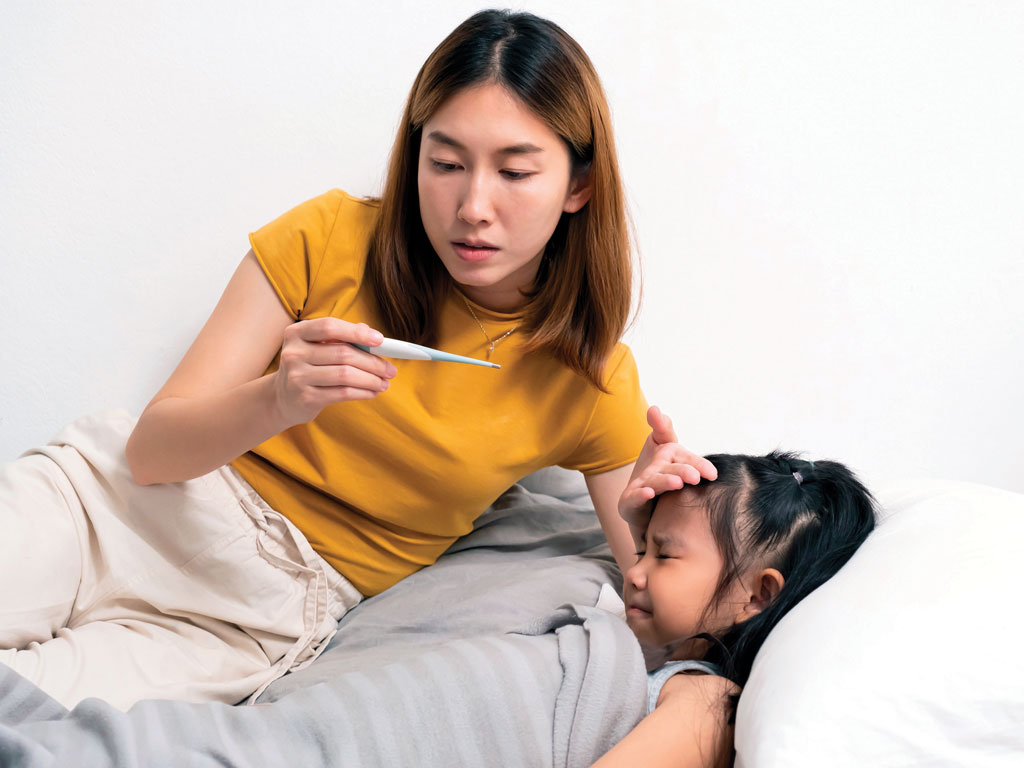by Stephanie Lopes & Dr. Vinson Diep
The weather is getting chillier. Families and friends have happily gathered and even traveled for the holidays. Students are returning to school after breaks to be greeted by fun-loving friends. And sadly, some of our children might be sniffling, coughing and catching colds – or even bacterial infections.
“(How often children are sick) varies between age groups, but I would say six to 12 infections per year are common,” explains Dr. Vinson Diep, trusted pediatrician with an office at Kapiolani Medical Center for Women & Children.
“(Frequent sickness) especially holds true for those that are just starting day care or preschool,” Diep continues. “As children get older and have a chance to catch all the colds and build up their immune system, the illnesses per year start to decrease.”
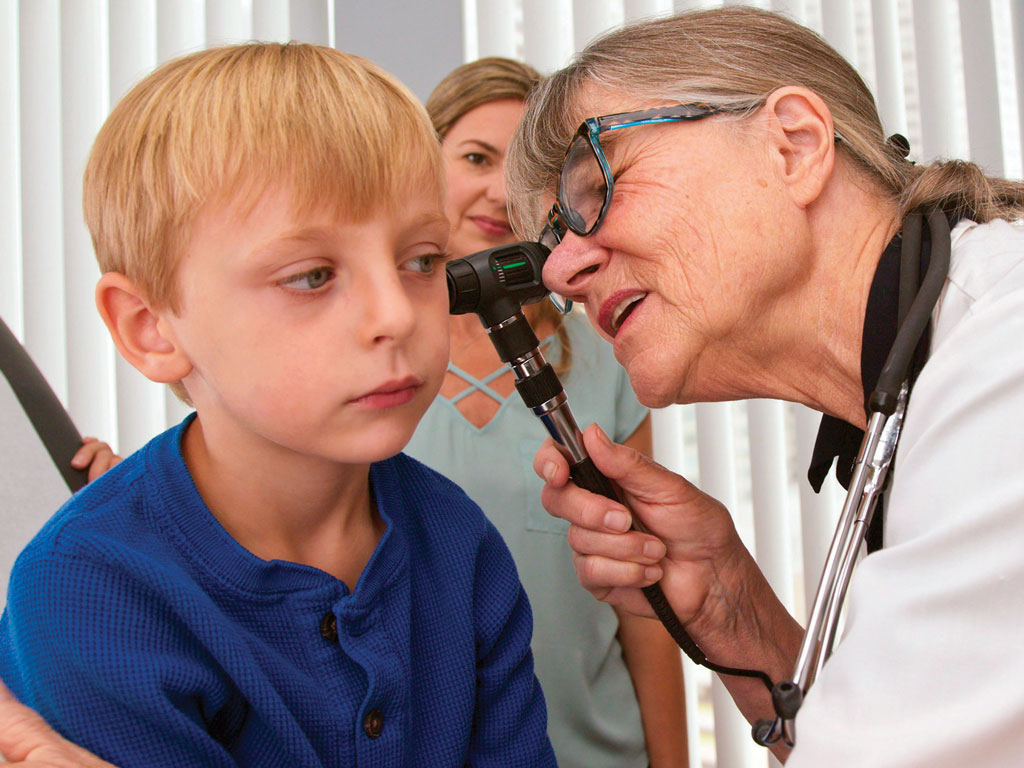
What are common sicknesses?
Fever, head and body aches, tiredness, sore throats, coughing, sneezing, vomiting, diarrhea, rashes, sores, blisters: These symptoms and many others might indicate a sickness, also known as an infection, which can be viral or bacterial.
A virus is a tiny germ – actually a tiny living organism – that carries genetic information (DNA or RNA) inside a protective coating (a capsid). A virus enters a person’s cells to make copies of itself, making the person become sick.
Bacteria is also a living thing, but, unlike a virus, it is its own single cell and can reproduce on its own. When a person gets sick, their body is exposed to harmful bacteria that typically comes from the environment, an infected person or animal, a bug or something contaminated with the bacteria (like food, water or surfaces). Note that some bacteria are actually helpful, helping people to digest food and kill off harmful bacteria, for example.
“Most common infections are caused by viruses,” illuminates Diep. “Influenza, COVID and RSV are the most well-known viruses out there, but there are many others that are responsible for causing the common cold.”
“Other common infections include ear infections, sinus infections, strep throat and pneumonia. The stomach flu, causing vomiting and diarrhea, is another common infection,” Diep continues.
What are signs of a virus? “Most viral infections have the symptoms that most people associate with the common cold. These symptoms include fever, chills, sore throat, cough, runny nose and congestion. Vomiting and diarrhea are also symptoms of viral infections,” Diep describes.
And what are the symptoms of a bacterial infection, like strep throat or whooping cough? “There is a lot of overlap between viral and bacterial infections, but bacterial infections generally persist for a longer period of time (generally more than ten to 14 days), have more persistent fevers and have a progressively worsening course,” says Diep. “It takes a visit to the doctor to diagnose a bacterial infection, as those require antibiotics to treat.”
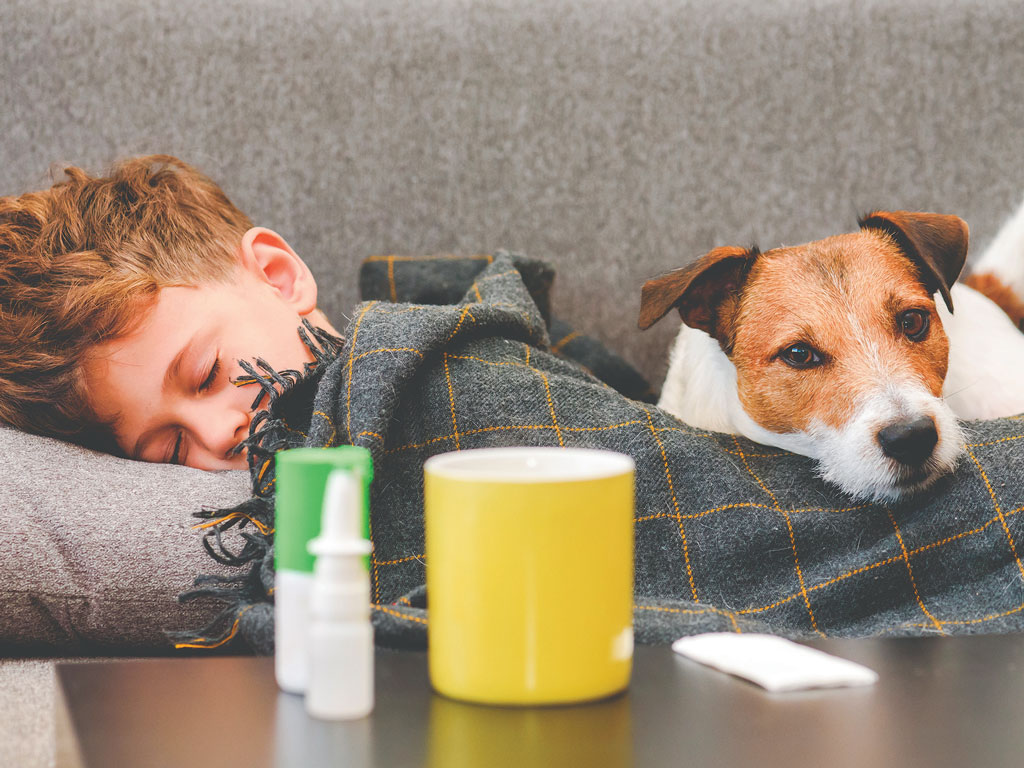
How can I help my child feel better?
When a child gets sick, it is no fun for anyone. But the good news is that with some time and the appropriate care, the sickness typically goes away, often leaving the immune system stronger than before.
The majority of sickness, like the common cold, are viral and “treated with supportive care,” explains Diep. “Care for viral infections (like colds and the flu) involves using Tylenol and Ibuprofen for fever, rest, hydration and letting the body naturally fight off these infections.”
“Nasal saline rinses or sprays are very effective in helping clear the nose and easing congestion. Humidifiers or steam showers can also help and promote mucus drainage,” describes Diep.
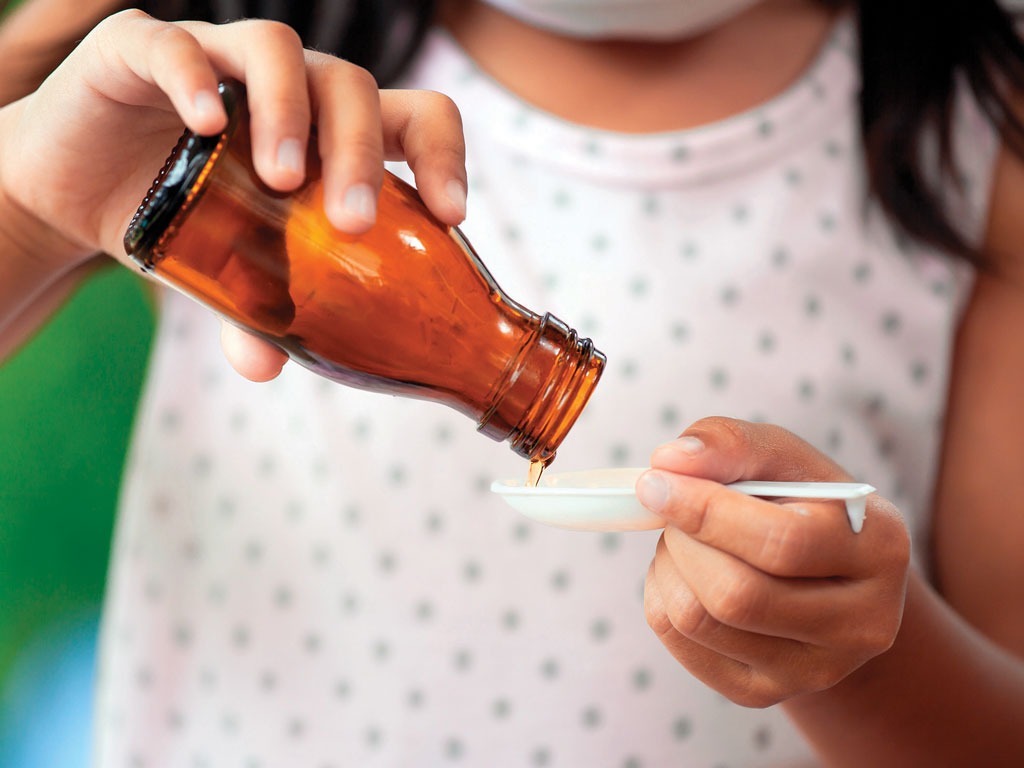
“Older kids may use cough drops or lozenges to help soothe the throat, and those over age one may find swallowing a spoonful of honey to be useful for sore throat and coughing,” continues Diep. However, if a child has a bacterial infection, these at-home remedies might not do the trick. “Bacterial infections are treated with antibiotics,” states Diep.
When should my child see a doctor?
My child has a runny nose, a cough and a slight fever: Should I take her to the doctor? We always want to do what’s best for our child, so this question often crosses my mind when my child is sick.
First of all, a visit to the doctor often won’t cause any further harm, and a parent’s intuition should always be followed. However, only in certain cases will a doctor’s intervention be necessary for an infection, as most viral infections will get better at home with time and rest.
“In general, fevers lasting more than five days consistently should be evaluated by a doctor,” summarizes Diep. Note that young babies who have a slight fever might need to be seen by the doctor immediately.
“Symptoms lasting more 10 days and not improving should also be seen by a doctor. Any difficulty breathing, apnea (not breathing), or cyanosis (turning blue or purple around the lips) should also be seen by a doctor,” Diep continues. “The inability to eat or drink, significantly decreased number of wet diapers (for babies) and lack of energy should also be evaluated.”
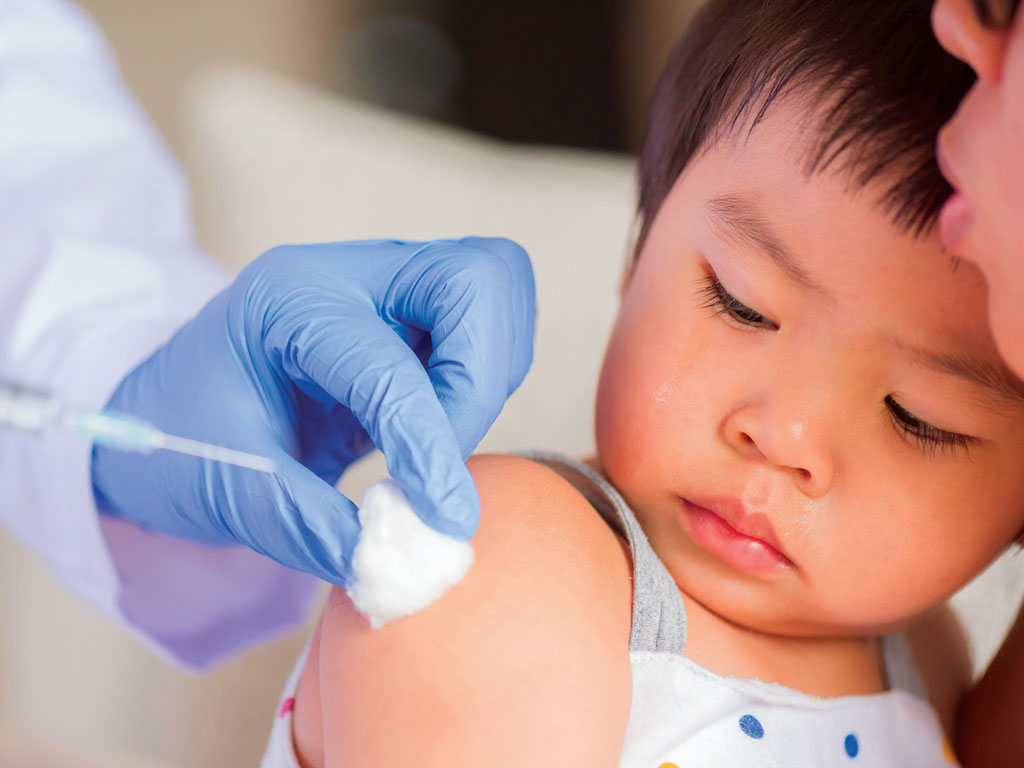
How can I help my child stay healthy?
“Immunizations are one of the best ways to protect (children from getting sick), such as getting the flu shot every year,” recommends Diep.
“Practice good hand washing and cough/sneezing habits, such as sneezing into your elbow or shirt instead of on your hands,” adds Diep. “Wearing a mask when you are sick can also help prevent the spread of illnesses to others.”
“Many families also worry about asthma and coughing, and one of the risk factors for that is secondhand smoke exposure. So, decreasing/stopping smoking for parents is also key in helping to decrease the rates of illnesses.”
Along with all the happy times, sickness unfortunately is a part of growing up. However, practicing preventative actions and acting appropriately when sickness does strike can help to bring family members back to creating happy memories.
Dr. Diep can be reached at 808-945-9955 or pediatrics@doctordiep.com.


